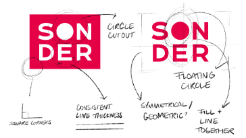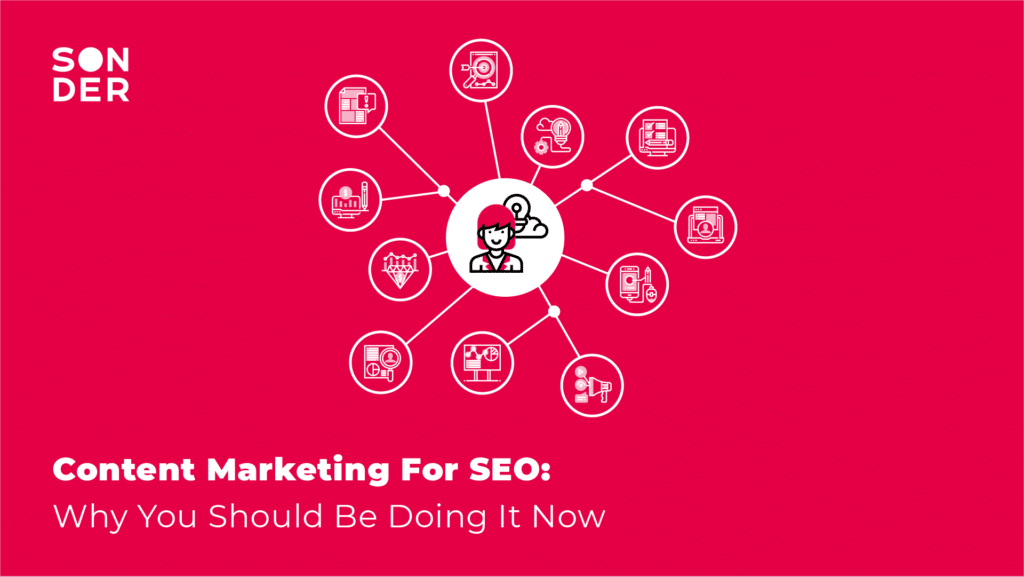Content marketing has been around for years and years, in fact, centuries. Things like advertorials, packaged brand information, video content, and even webinars, are all forms of content marketing. We’ve only actually been calling it content marketing for a few years though. Only really now, is it on the up in popularity and being used by a range of different industries.
What is content marketing and how does it work
Content marketing is pretty much any content that you can market. So, blogs, videos, infographics, social media, and even podcasts all fall under content marketing. Especially though, we’re talking about blogs, videos, and infographics: the core materials of content marketing.
Our friends over at Visme have put together an amazing guide on making your own infographic.
Basically, you create content that your audience will be interested in, or will find useful. This can be targeting a new client, or clients you’d like to become repeat clients. It’s sometimes worthwhile to create content for people within your industry too. Say there’s a new piece of industry news. You do a write up about your take on that news and what it means for people within your sector. Someone else working within your industry might read it and think, “Wow, that’s a really good point.” They then might share your article on LinkedIn, or retweet it, or just share it with a few colleagues — either way, that’s exactly the goal.
Content marketing can be this big, scary unknown to some. How-tos, educational pieces on topics you’re really well versed in, or your take on industry news — these are all safe places to start. Basically you give your customers (and non-customers) all of this value for free. Then, because you aren’t actively selling them something or shaping the content around you and your business specifically, it makes you look more authoritative and more trustworthy.
Why use content marketing to improve SEO?
This is why we love content marketing so much. It’s full of new opportunities and seemingly endless perks. So yeah, content marketing improves and boosts your organic rankings. When you craft a blog or create a video with a transcript, you get to pack it full of keywords and keyphrases that —if researched and planned well— your ideal clients are searching for. You get to create a stronger internal linking profile as well as an external linking profile. This means you get to cleverly distribute authority throughout your website.
Creating authoritative content that educates your clients or customers, actively shows Google that you’re a knowledgeable resource. And while some people make SEO out to be total witchcraft and hoodwinkery, at the end of the day, this is all Google’s been asking for. Nearly every ranking algorithm instilled by Google is another ploy to try and make us create quality, helpful content. Give the people what they want… in this case, Google.
Another layer to this is that, if your content is really good then you’ll probably receive quotes and backlinks from other websites or news sources within your industry. So, through providing a link to your piece, they’re telling Google that you know what you’re talking about.
Now, on top of all of that… there’s also just the simple fact that your blogs or videos will send more traffic to your website. Boosting your organic traffic helps to boost your organic rankings — how good is content marketing?!
Head here to learn a little bit more about content marketing.
Why you should be doing it right now
Much like, I don’t know, pretty much anything, the sooner you start, the further ahead you’ll be. Let me give you an example. Digital marketing (us, hey!) is a super competitive field. It’s so, so hard to rank on even the first page of Google for so many digital marketing terms. This is because SEOs (the guys who optimise websites to rank on Google) usually work for digital marketing agencies. So, the longer you and your digital marketing agency have been chipping away at content creation, optimisation, and all those good things, the more likely you are to rank.
This means baby digital agencies have to target more niche terms to find themselves the holy grail (the holy grail being inbound leads, babeh). Have you heard of HubSpot? Of course you have. HubSpot will rank within the top few positions for almost any marketing, inbound marketing, or content marketing term you can think to search. It’s because they conceptualised the inbound model, they’re the leaders and driving force of content marketing. So they’ve been developing content for longer than any of us.
So, what does this mean for you? Well, it means unless you’re also in the digital marketing game, I have really good news for you. You’ve got time! Your online store, your unique product, your service-based business, it still has a really good chance to get started and get ahead.
Content marketing isn’t just for improving SEO
Content marketing isn’t just for SEO though. It’s actually such a useful and diverse tool. HubSpot talk about the three main stages of the buyer’s journey being: attract, engage, and delight. These three stages can help you create content for those three different clients.
Attract
Customers in this stage or phase are still looking to be educated. It’s called the ‘attract’ stage because they still need to be attracted to you and your brand, especially though, your product. If you’re creating content for this group, you should create base-level informative content. Tell the user what their problem is, what the solution is, and why a product or service like yours is the best solution. Let them know what they should be looking for, what are the pros and cons of the different options? Offer them other, external resources too. Remember, at this stage it isn’t about you — it’s about educating the user. They’ve just started looking, so they probably aren’t ready to make a purchase yet anyway, just chill out.
Engage
Now is the time to engage your customers. You want to develop relationships with them. You can try and do this by tailoring content to this group of customers but it needs to be supported by clever CTAs. Create a pop up on your blog that says, “Hey, did you want this in a PDF to save?”, or “Hey, we actually create more content like this, but we like to keep it exclusive, do you want to sign up to our newsletter?”
Once you have their email address you can send this personalised content to them. Address their concerns, educate them on what you think they might not know, and actively support their buyer’s journey.
Delight
Okay, the customer’s been engaged. So by now, they’ve weighed a few options, they’ve read blogs, they’ve read reviews, they’ve received your clever email updates. What’s next? Delight them. This is where you sell your product or service specifically. This is where you send them email updates, offers, have your chatbot pop up and say, “Hey, looks like you’re back again. Did you want some extra information on that product you keep checking out? You continue to gently deliver them information and content that they’ll actually appreciate.
How to use content marketing for SEO
Start out with some clear goals. What are your keywords, what do you want to rank for? What are your customers searching for? Your customer can’t be searching for your product if they don’t know it exists.
Here’s an example. You’ve started a new business for your super clever new product. It’s called ‘Polish Gone’, it’s the first spray to remove nail polish from carpet. But no one knows it exists yet and you need to market it. There’s no point in optimising your website to rank for ‘Polish Gone’. No one knows it exists, so how do they know to search for it? You need to be targeting the terms the poor people who keep spilling nail polish on the carpet are googling:
- How do I get nail polish out of carpet?
- Recipe to get nail polish out of carpet
- What can I use to remove nail polish from carpet
Your content strategy
Your keyphrases need to target problems and solutions. And these keyphrases are your ticket to creating a content strategy. It doesn’t have to be the biggest, fanciest spreadsheet in the world. But it does need to give you a bit of a plan and be kind of coherent.
That means your website works directly with your landing pages and your landing pages work with your blog content and your blog content works with your social captions. Planning ahead of time, and not just banging out posts as the ideas come to you is the ticket to strategic content that performs well. Have your keywords, know what your customers are looking for, and then tailor your website content and landing pages to those keywords, those problems, and most importantly, those solutions.
From there, create extra content to support and boost and expand on the existing content, or information you’ve provided via your website. Say your core service is cleaning, you might create a cleaning service page on your website. Then, you might make a few landing pages: Commercial Cleaning, Residential Cleaning and Industrial Cleaning.
Once you’ve got these landing pages up, you can create content around them. So for Residential Cleaning, you might write a few blogs about common stain removal, soap scum removal, and tips for a cleaner home.
From the website service page, to the landing page, to the blogs, you’ve given your website visitors better value and demonstrated your knowledge. But most importantly? You’ve targeted those keywords and phrases, shown Google how authoritative you are, and created unique, rich content for your website — yay.
______
Do you think content marketing could help your business? You’re probably right. Book a free sit down with Tom and James today to discuss a content marketing plan for your business.


 Don’t delay book a free digital chat today
Don’t delay book a free digital chat today

